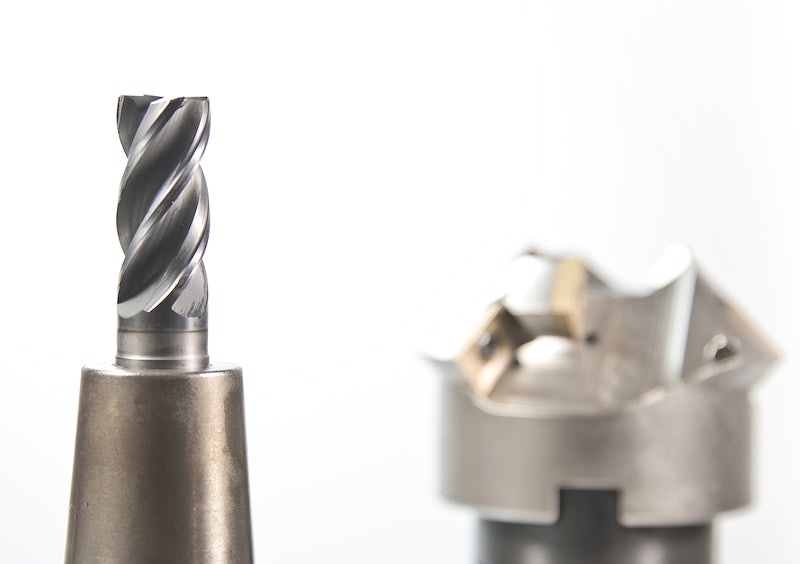はじめに精密ツーリングの基礎
公差が厳しく、性能への期待が最優先される高精度製造の領域では、 精密超硬ロッドブランク が君臨しています。超硬合金から丹念に作られたこの円筒形のロッドは、多様な切削工具、摩耗部品、その他の重要な部品の基礎となる構成要素として機能します。
この包括的なガイドでは、精密超硬ロッドブランク加工サービスの世界を掘り下げ、その意義、加工プロセスの複雑さ、そしてTRUERのような信頼できるプロバイダーと提携する利点を探ります。
精密超硬ロッドブランクス:それは何ですか?
精度の本質を理解する
精密超硬ロッドブランクは、超硬合金で構成された円柱状のロッドを精密に加工したものです。超硬合金は、その卓越した硬度、耐摩耗性、極端な温度や圧力に耐える能力で有名な複合材料です。これらのブランクは、揺るぎない精度と耐久性が要求されるさまざまな工具や部品の製造の出発点となります。

精密超硬ロッドブランク加工の技術
原材料を精密部品に変える
未加工の超硬ブランクから完成した精密部品に至るまでには、エンジニアリングの専門知識と高度な機械加工能力が必要です。この工程には通常、次のような重要なステップが含まれます:
- 素材の選択: 最初の重要なステップは、用途の特定要件に基づいて適切な超硬材種を選択することです。硬度、靭性、耐摩耗性、耐熱性などの要素が、最適な性能を発揮するための理想的な材種を決定します。
- カッティング: 先端にダイヤモンドが施された特殊な切削工具を使用し、超硬ロッドは極めて正確に希望の長さに切断されます。この工程では、寸法精度を確保し、超硬素材への損傷を防ぐため、細心の管理が要求されます。
- 研磨: 多くの場合、ダイヤモンド砥石を装備したCNC研削盤で行われる研削作業は、超硬ロッドを最終的な円筒形に成形します。この工程は余分な材料を取り除き、ミクロン単位の精度で希望の直径と表面仕上げを実現します。
- ラッピングとポリッシング: 最高レベルの表面仕上げと寸法精度が要求される用途には、ラッピングとポリッシング加工が採用されます。ラッピングは微細な砥粒を利用して微細な欠陥を除去し、ポリッシングは鏡面仕上げを行います。
- 検査だ: 加工工程では、各精密超硬ロッドブランクがお客様の厳しい公差と仕様に適合するよう、厳格な品質管理を実施しています。
精密超硬ロッドブランクプロパティ:詳しく見る
重要な特徴を解き明かす
精密超硬ロッドブランクの卓越した性能は、超硬合金のユニークな特性に由来しています。
表1:超硬合金棒ブランクの代表的特性
| プロパティ | 説明 | 代表値 |
|---|---|---|
| 硬度(HRA) | 凹みと引っかきに対する耐性 | 88-95 |
| 横破断強度(TRS) | 曲げ力に耐える能力 | 1500-2500 MPa |
| 密度 | 単位体積当たりの質量 | 13.5-15.0 g/cm³ |
| 熱膨張係数(CTE) | 温度変化に伴う膨張率 | 4.5-6.5 x 10-⁶/°C |
| 熱伝導率 | 熱伝導能力 | 50-120 W/mK |
精密超硬ロッドブランクスの用途
業界を超えたイノベーションの推進
精密超硬ロッドブランクの汎用性と卓越した特性により、多くの産業で広く採用されています:
- 金属加工と機械加工: 精密超硬ロッドブランクは、ドリル、エンドミル、リーマ、ボーリングバーなどの切削工具の基礎となり、金属の高速・高精度加工を可能にします。
- 木工: 超硬合金は切れ味を長時間維持できるため、木工用工具に最適です。精密超硬ロッドブランクは、鋸刃、ルータービット、および木材加工で優れた結果をもたらすその他の切削工具の製造に使用されます。
- 石油・ガス 石油・ガス探査と生産の厳しい環境では、優れた耐久性を持つ工具が必要です。精密超硬ロッドブランクは、ドリルビット、摩耗部品、および地中深くで遭遇する過酷な条件に耐えるその他の部品の製造に使用されます。
- 医療機器 医療機器業界は、生体適合性と極めて厳しい公差での加工が可能な精密超硬ロッドブランクに信頼を寄せています。手術器具、インプラント、その他の医療機器は、超硬合金の精度と耐久性の恩恵を受けています。
- 航空宇宙 航空宇宙産業では、軽量でありながら驚異的な強度を持つ材料が求められます。精密超硬ロッドブランクは、ジェットエンジン、着陸装置、その他の重要な航空宇宙用途の部品製造に使用されています。
超硬ロッドブランクサプライヤーの比較
サプライヤーをナビゲートする
精密超硬ロッドブランク加工サービスの適切なサプライヤーを選択することは、製品の品質、タイムリーな納期、競争力のある価格を確保するために非常に重要です。
表2:超硬ロッドブランク加工サービスプロバイダーの比較
| サプライヤー | 所在地 | 価格帯(1個あたり、米ドル) | 特産品 |
|---|---|---|---|
| ケナメタル | アメリカ | $50 – $1000+ | 幅広い超硬材種、複雑な形状、精密研削能力 |
| サンドビック・コロマント | スウェーデン | $60 – $1200+ | 高度な超硬材種、特殊コーティング、工具最適化のための技術サポート |
| セラティジット | ルクセンブルク | $40 – $800+ | 費用対効果の高いソリューション、標準およびカスタム超硬グレード、グローバルな製造拠点 |
| ISCAR | イスラエル | $55 – $1100+ | 革新的な工具形状、困難な用途向けの特殊コーティングの専門知識 |
| 三菱マテリアル | 日本 | $65 – $1300+ | 高性能超硬合金グレード、厳しい公差、信頼できるサプライチェーンによる安定した品質 |
| TRUER | 中国 | $45 – $900+ | 高品質で費用対効果の高い超硬ロッドブランク加工、地質鉱業製品の専門知識、優れた精度と安定性を実現する高度なプレス・研削技術による垂直統合製造 |
注: 価格は概算であり、ブランクのサイズ、等級、数量、公差、表面仕上げの要件、およびその他の要因によって大幅に異なる場合があります。
精密超硬ロッドブランクスの利点と限界
長所と短所を比較する
表3:精密超硬ロッドブランクスの利点と限界
| メリット | 制限事項 |
|---|---|
| 卓越した硬度と耐摩耗性: 工具や部品が極度の磨耗や損傷に耐えられるようにし、耐用年数を延ばし、ダウンタイムを短縮する。 | 脆い性質: 超硬合金は硬度が高いため、本質的にもろく、衝撃や大きな応力が加わると欠けたり割れたりしやすい。 |
| 高温安定性: 高温下でも特性を維持するため、高速加工やその他の過酷な用途に適している。 | 他の素材に比べコストが高い: 超硬合金の優れた特性は、高速度鋼(HSS)のような材料と比較すると、初期コストが高くなります。 |
| 精密加工性: 極めて厳しい公差での加工が可能で、高精度の工具や部品の製造が可能。 | 機械加工の専門知識が必要: 超硬合金の加工には、その硬度と研磨性のために特殊な設備、工具、専門知識が必要です。 |
TRUERの強み:TRUERを選ぶ理由
精密超硬ロッドブランク加工における信頼のパートナー
- 品質への揺るぎないこだわり: で TRUER品質が最も重要です。当社では、すべての精密超硬ロッドブランクがお客様のご期待に沿えるよう、製造工程全体で厳格な品質管理を行っています。
- 高度な製造能力: 当社の最先端設備には、最新のCNCマシニングセンター、研削盤、検査装置が備えられており、卓越した精度と再現性で精密超硬ロッドブランクを製造することができます。
- 経験豊富なエンジニアリング・チーム: 当社の熟練したエンジニアチームは、超硬加工における豊富な経験を有しており、お客様と緊密に連携して、特定の用途要件に合わせたカスタムソリューションを開発することができます。
- 競争力のある価格とタイムリーな配達: 当社は、費用対効果と納期厳守の重要性を理解しています。垂直統合された製造プロセスと効率的なサプライチェーンにより、競争力のある価格と信頼性の高いリードタイムを提供しています。
よくある質問(FAQ)
主要な懸念事項への対応
1.精密超硬ロッドブランク加工サービスの一般的なリードタイムはどのくらいですか?
リードタイムは、注文量、ブランクの複雑さ、現在の生産能力などの要因によって異なります。しかし、ほとんどのご注文で2~4週間のリードタイムを提供できるよう努力しています。
2.加工可能な最小径の超硬棒は?
当社の高度な研削能力により、直径0.5 mmの超硬ロッドを卓越した精度で加工することができます。
3.精密超硬ロッドブランクにコーティングはできますか?
はい、窒化チタン(TiN)、窒化チタン・アルミニウム(TiAlN)、ダイヤモンドライクカーボン(DLC)コーティングなど、耐摩耗性を高め、摩擦を減らし、工具の寿命を延ばすコーティングサービスを提供しています。
4.精密ロッドブランク加工用に、どのような超硬材種を提供していますか?
当社は、汎用加工、高速切削、耐衝撃性、高温用途に適した超硬材種を包括的に取り揃えています。当社のエンジニアリングチームは、お客様の特定のニーズに最適な材種を選択するお手伝いをいたします。
5.精密超硬ロッドブランク加工の見積もりを依頼するには、どのような情報が必要ですか?
正確なお見積もりを提供するためには、ご希望の超硬グレード、ロッド直径、長さ、公差、表面仕上げの要件、注文数量などの情報が必要です。ご希望のブランク形状の図面やスケッチも役立ちます。




